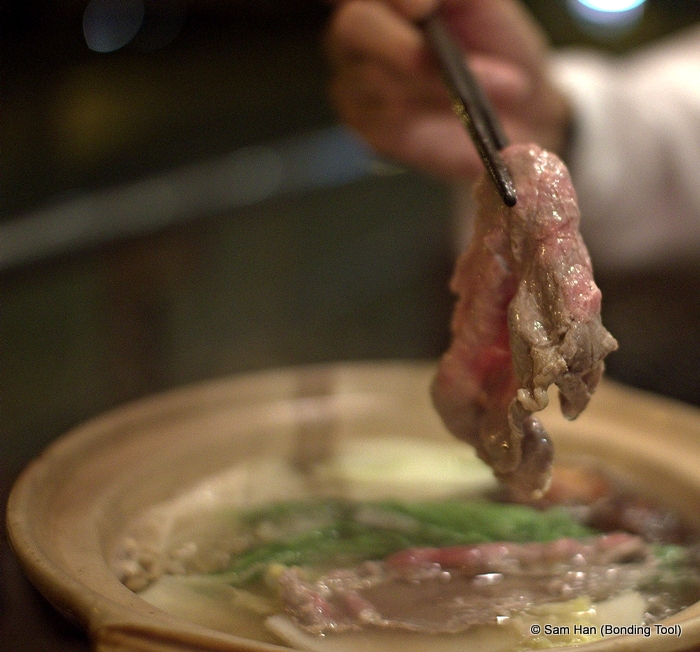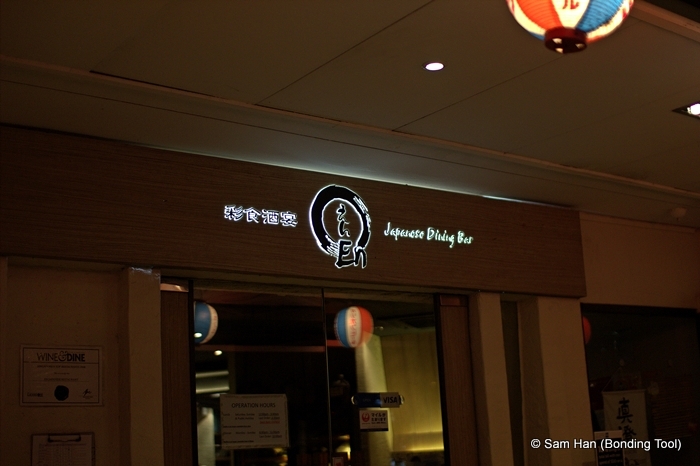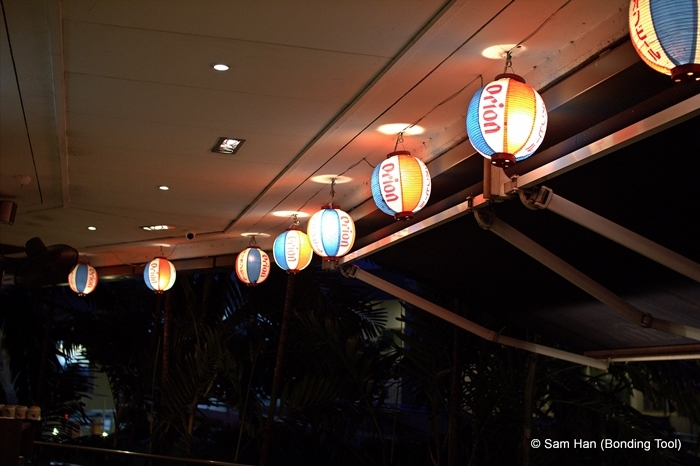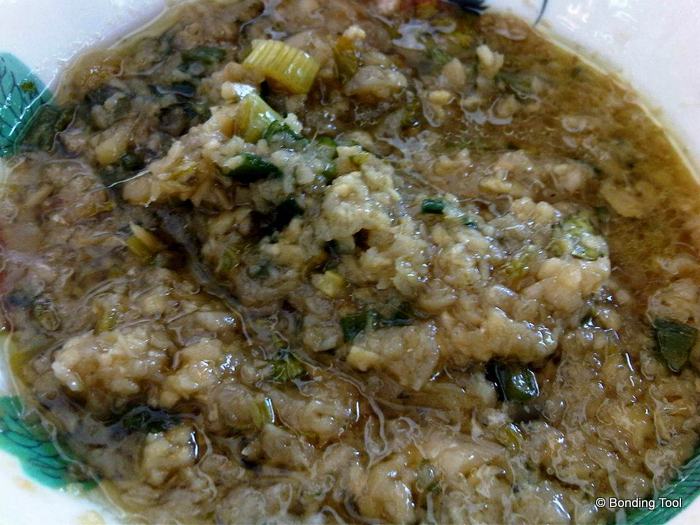 |
| Braised Pork Belly or Lor Bah 魯肉 (can substitute with chopped whole chicken bone in). |
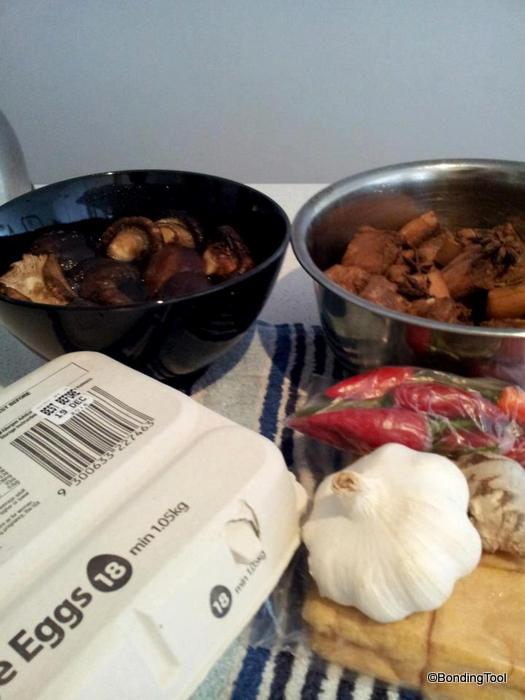 |
| Some ingredients used. |
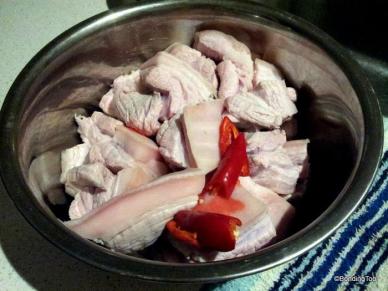 |
| Scald the pork belly with hot water for a few minutes until they turn opaque and rinse well. |
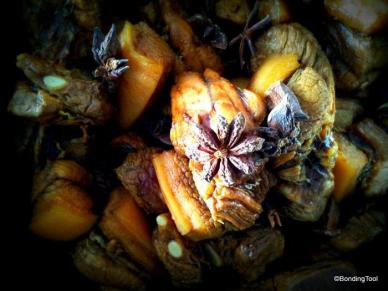 |
| Marinate the pork and mushrooms overnight with all the spices and half the seasoning, optional. |
Scald the pork belly with hot water for a few minutes until they turn opaque and rinse well. If you have time, marinate the pork and mushrooms overnight with all the spices and half the seasoning, except water and hard boiled eggs. The next day, bring it out from the fridge and onto the stove, add 2 tablespoons sugar and stir fry. Add water and bring to the boil. Lower flame and stew till tender. Adjust seasoning at the end of cooking.
 |
| Bring overnight marinated pork out of fridge and let it come to room temperature. |
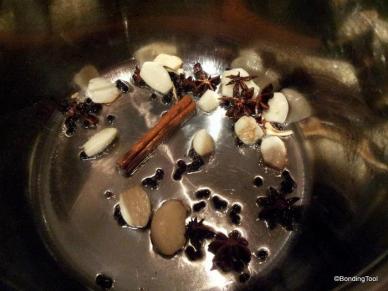 |
| Fry whole spices over medium heat. |
If you had not marinated the pork overnight, start from this step. Fry spices in oils till fragrant. Careful not to burn them as sesame oil tends to become bitter over high heat.
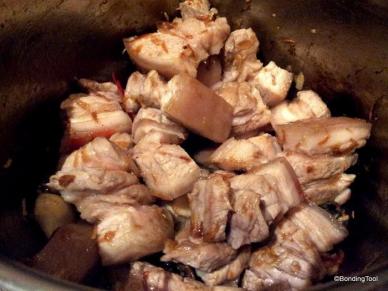 |
| Brown pork on all sides and stir well to mix. |
 |
| Add boiling hot water. Skim off the broth scum. |
Add pork and sugar, fry till lightly browned. Add mushrooms, if using, at this stage. Add the mushroom water and top with hot water to this level (enough to cover meat completely plus more to cover eggs later) and then lower flame. Skim off the broth scum.
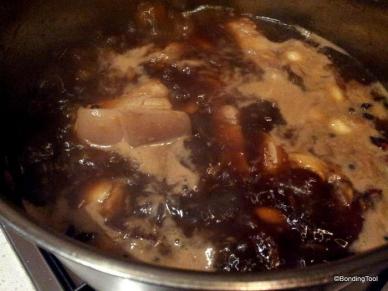 |
| Skim off the scum as they form again. |
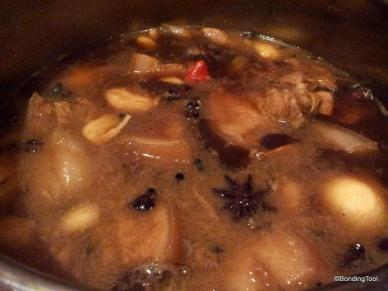 |
| The dish is sometimes named after this dark soy called Tau Yew Bah – 豆油肉 |
Add dark soy for colour and taste. Remove broth scum as you stew. Put on the lid during the whole stewing process over medium flame till pork and mushrooms are tender. Stir every now and then to prevent stew from being burnt. Skim off the excess oil near end of cooking.
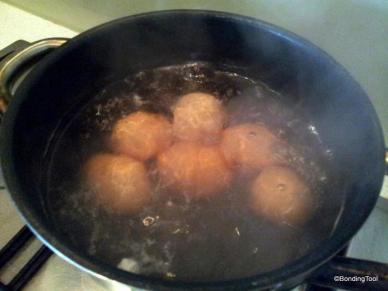 |
| Add 1 teaspoon salt to hard boil the eggs. |
Hard boil the eggs for at least half an hour. Leave eggs in a bowl of cold water and peel off the shell when completely cooled. Add eggs to the pork when they are 1/4 cooked (meat is still tough at this stage and we really want to infuse the eggs with the stewing flavours).
 |
| Adding chilli is personal and optional. |
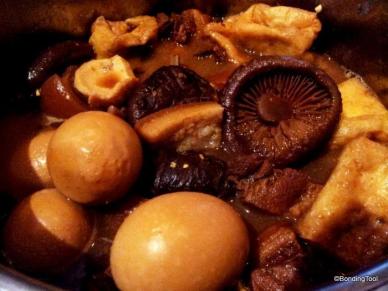 |
| Be careful when stirring - see I've broken an egg :( |
Add tau pok (deep-fried soybean tofu puff) when meat is almost tender and adjust final seasoning. Stew till meat and mushrooms are tender and gravy thickens a little. Do not overcook the bean puffs. Total stewing time is about 1.5 hours more or less (chicken cooks faster, so be careful here). Turn off fire and keep covered for another 15 minutes before serving with steamed Jasmine rice, crusty French loaf or Chinese mantou (buns). Like most stews, they taste better the next day.
Ingredients:
1 to 1.5kg Pork Belly (if substituted with chicken, needs to be marinated for an hour at least and some cornstarch and use lesser water when stewing).
Hard-boiled Eggs (as many as you wish).
10 Dried Shitake Mushrooms (optional, more if you like. reconstituted in hot water, drain and keep the water, rinse mushrooms well)
1 Whole bulb of Garlic, lightly bashed and peel off skin.
2 slices of Ginger.
2 Red Chillies, optional.
1 packet of Tau Pok (deep-fried Soybean Tofu Puffs).
Seasonings:
6 tablespoons Dark Soy (豆油).
2 tablespoons Light Soy.
Ground White Pepper, to taste.
Sugar, to taste (about 2-3 tbs for 1 kg Pork).
1 teaspoon of 5-spice Powder (more if you like it spicy).
Whole spices:
5 – 8 star anise (depending on size).
1 cinnamon stick.
10 peppercorns.
Enough water to cover the meat plus more (about 2 litres plus).
2 tablespoons Veg Oil.
1 tablespoon Sesame Oil.
Variation:
You can cook the pork belly whole and slice into thin rectangular shape to be sandwiched between the Chinese mantou. The gravy should be reduced till very thick and syrupy (may need to use more sugar). This is the Chinese version of Sliders. Serve with Taro fries :)
P.S. Chinese and Asian cooking uses a lot of guesstimation if there’s such a word. Always use lesser seasoning whenever you’re in doubt as you can add more later.
Happy Cooking :)

